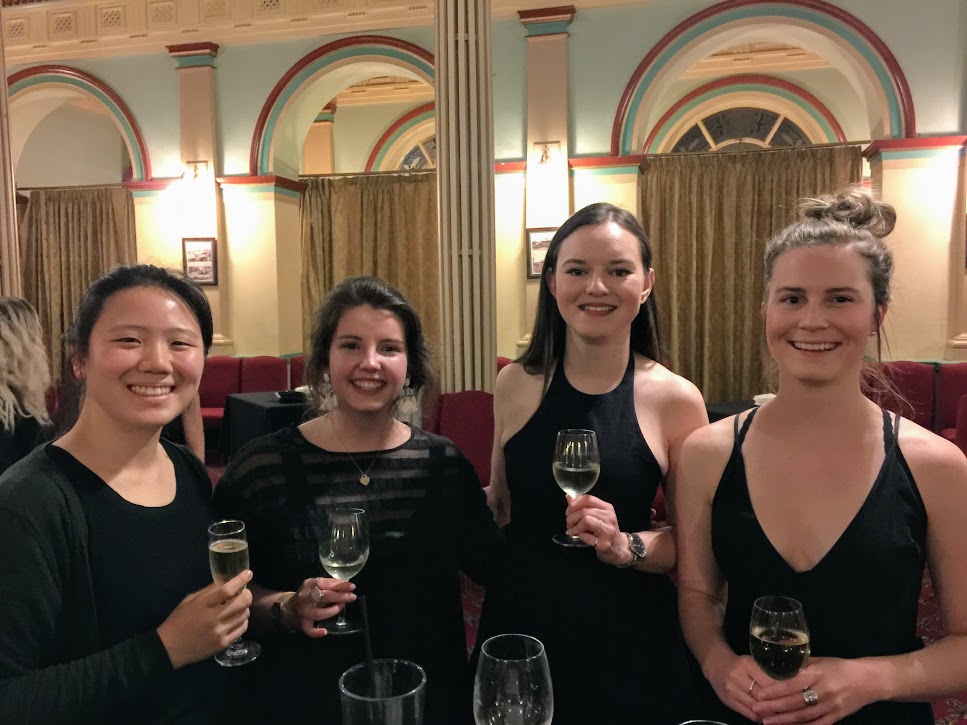Set in Katoomba in the picturesque Blue Mountains, this year’s National Conference theme ‘Collaborate, Connect, Conserve’, was eagerly embraced by presenters and delegates alike. A range of attendees were present; students, conservation professionals, those outside of the profession and sponsors. Surrounded by like-minded people, I was captivated by presentations about activating collections, working with communities, advocating for the profession and technology in the field.
 A moving tribute to Colin Pearson was a memorable part of the program and included a presentation of the IIC Lifetime Award.
A moving tribute to Colin Pearson was a memorable part of the program and included a presentation of the IIC Lifetime Award.
Relying on memory and scrappy notes, here I have focussed on the presentations and events that have remained with me. Throughout the conference, several of the speakers received harmonised gasps, “oohhs” and “ahhs” from the audience in response to alarming videos of people vs artwork, photos of insect infestation, and stunning before and after treatment images. There were fantastic lightening talks that could have been longer, and I always look forward to reading the posters.

The keynote speaker, Tea Uglow, Creative Director for Google’s Creative Lab in Sydney, spoke of ways her team bring art and culture together using technology. Uglow promotes different ways of seeing, interacting and experiencing culture through collaborations. Questions were raised about how technologies should be conserved. Also speaking about the importance of collaborations was guest speaker Dion Pieta, Auckland Museum, who focussed on The Hotunui Preservation Project which saw traditional Mauri practices and conservation professionals working side by side.

From day one it was obvious that the future of training in conservation would be a common thread. Julian Bickersteth commented on conservation training and questioned the amount of manual skills being taught. This led to discussions regarding the need for more internships and mentoring. One of the first flyers I picked from my goodie bag described a mentorship program developed by the students from the Grimwade Centre. This program model has the potential to be replicated across the sector to engage a wider audience, such as emerging conservators like myself who require more hands-on experience. I was encouraged to see the input and attendance from the conservation students from both Melbourne and Canberra.
Robyn Sloggett and the Manager Museums with Bathurst Regional Council, Janelle Middleton, discussed the partnership between Bathrust Regional Council and the Grimwade Centre. A council heritage medal won by Sloggett enabled this partnership, and ongoing conservation work, within the community. I hope other councils in regional Australia would be open to adopt a similar model.
Some of the other examples of bringing conservation to the community were The War Heritage Roadshow by the Grimwade Centre, ACT Division events during the Canberra and Region Heritage Festivals, and Carolyn McLennan collaborating with the Yolngu Artists at Bula’bula Arts, Ramingining. Alice Beale spoke about activating the collection by enabling the Yolngu people to play and record digeridoos from the South Australian Museum. In a similar way, Jennifer Brian facilitated the use of musical instruments in the National Museum of Australia.
Lucy Willet talked about using product marketing, such as imitation and priming to develop alternatives to physical barriers to protect artwork. Willet also spoke about iPad condition reporting, which is becoming a more common method adopted by institutions. Willet uses the app iAuditor a risk assessment app that can be customised, and Kasi Albert spoke about her use of the app ‘Notability’. I look forward to investigating these apps, as well as looking into the artist questionnaire discussed by Asti Sherring in relation to time based art.
Social events included an opening reception at the Blue Mountains Cultural Centre which featured a spectacular panoramic viewing platform, and the glamourous cocktail party was a fantastic way to relax and connect with other delegates. Tours are always a great part of a conference and I enjoyed a tour to the Norman Lindsay Gallery. I will have to make time to revisit Katoomba and experience the other excursion options; The Hydro Majestic Hotel, a bushwalk or a trip on the Hop-on-hop-off bus.


Holding the conference outside of a capital city allowed delegates the opportunity to spend more time together, socialise and connect, catching up with old friends and new. The Carrington Hotel was the perfect venue and we were looked after extremely well. Congratulations to the organising committee on a wonderful conference. I am looking forward to experiencing what Vic Division will have in store for us in 2019!